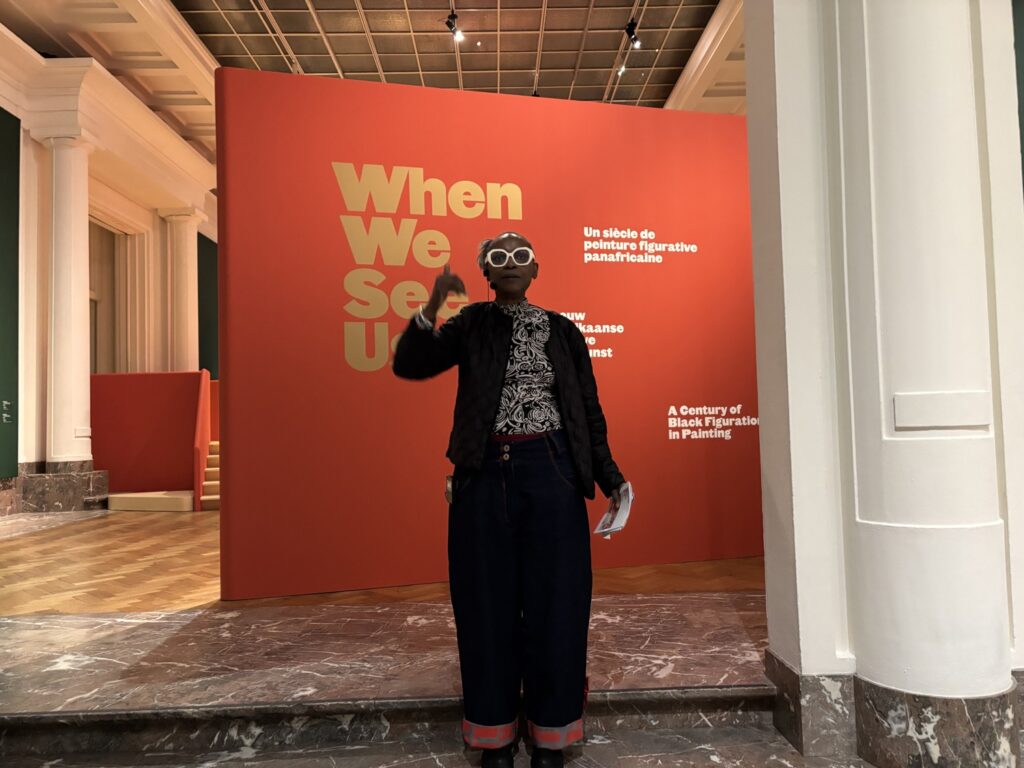How have Black artists from around the world depicted everyday life and their experiences over the past 100 years? Answering that question is the aim of 'When We See Us – A Century of Pan-African Figurative Art,' which opens on Friday at the Palais des Beaux-Arts (Bozar) in Brussels.
The exhibition, which runs until 10 August, showcases over 150 paintings, many of which are being shown in Belgium for the first time.
It is divided into six themes: Everyday Life; Rest; Triumph and Emancipation; Sensuality; Spirituality; and Joy and Elation.
Artists from four continents
A unique soundscape accompanies each theme, enhancing the experience for visitors. The artworks are displayed without any chronological or geographical order so as to “amplify Black voices from diverse times and places,” Tandazani Dhlakama, one of the exhibition’s curators, explains.
Originally curated at Zeitz MOCAA Museum of Contemporary Art in Cape Town, South Africa, the exhibition features 155 artworks from Africa, the Americas, Europe and the Middle East.
The paintings were created by 118 artists of African descent, including the late American Jacob Lawrence, Ivorian Roméo Mivekannin, who is currently exhibited at the Louvre Lens, Congo's Chéri Samba, and British artist Lynette Yiadom-Boakye.
'When We See Us' presents a diverse range of perspectives from Black artists, countering historically biased representations.
A shift in perspective'
In a striking piece, South African painter Sthembiso Sibisi places four Black worshippers in the foreground in the sea, observed by a distant white surfer. Roméo Mivekannin’s 'Black Model, after Félix Vallotton' reassigns prominence to a Black figure in blue and orange, who captures the viewer’s attention, juxtaposed against an obscured white woman’s naked form.
The exhibition's title itself reflects a shift in perspective, inspired by the American mini-series 'When They See Us' (2019). By replacing “They” with “We,” the focus changes to a collective Black viewpoint.
Ava DuVernay’s series revisits the wrongful conviction in the United States in 1989 of five Black teenagers, based on racial bias, for the assault of a white woman. “I enjoy flipping things to keep the dialogue going,” says co-curator Koyo Kouoh.
'Joy is a radical, political way of existing.'
The varied media of collage, charcoal, oil, ink, enamel, and glitter are used to either reclaim the reclining nude motif or celebrate a spirituality resilient despite the scars of slavery and (neo-)colonialism, highlighted Koyo Kouoh, who was recently appointed curator of the next Venice Biennale.
Dance, song, and colourful celebrations fill the final room, dedicated to joy and elation.
“For a long time, I opposed the idea of ‘Black cheerfulness,’ as many of our cultures have been mocked for this very power of celebration,” the Swiss-Cameroonian curator who divides her time between Cape Town and Europe, admits. “It’s not just about laughing and dancing, but placing humanity at the centre of life.”
“Joy is a radical, political way of existing,” she concludes.
Free digital guide available
The exhibition ends with an extensive timeline of artistic movements associated with the featured artists. A reading corner provides additional resources for curious visitors.
Bozar offers a comprehensive programme of activities around 'When We See Us,' including concerts, conferences, night performances, and film screenings. Six 'Sofa sessions,' reflecting the six themes of the exhibition, will bring together artists and the public for an exclusive tour followed by a debate.
For the first time in Belgium, the Palais des Beaux-Arts in Brussels is introducing a digital guide — for on-site or remote visits — available on the free Bloomberg Connects app, available at Bloomberg Connects
The guide includes photos, audio comments, and videos. Additionally, a more traditional guide featuring introductory texts to the six sections and explanations of 28 selected works is available, also for free.
Following Cape Town in 2023, Basel last year, and now Brussels, the exhibition will move to Stockholm on 9 October.

